Queen of fashion: The importance of Queen Elizabeth II’s wardrobe
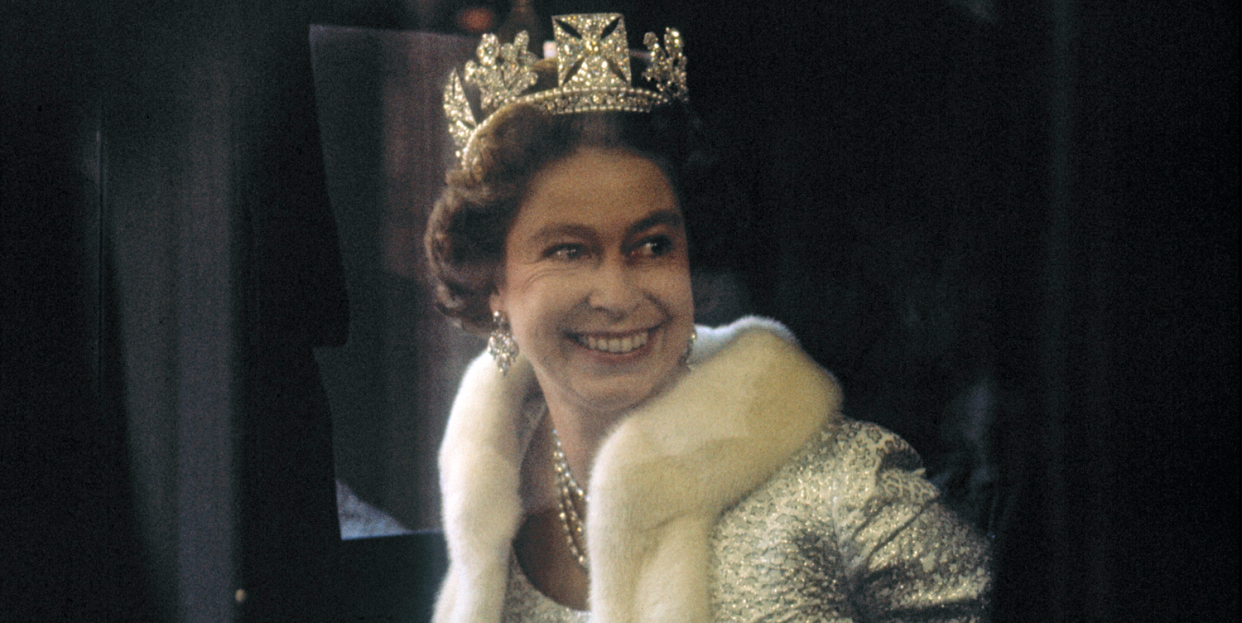
Royal and dress historian and curator, Claudia Acott Williams, celebrates Queen Elizabeth II's life as a style icon and the importance of what she wore on the international stage.
On 2 June 1953, Queen Elizabeth II was crowned at Westminster Abbey before a global audience of 20 million people. For many households, the coronation brought television into the home for the first time. What they witnessed was the pinnacle of costume drama as a 26-year-old woman pledged her life to the service of the nation.
The Coronation
Elizabeth II’s coronation dress was perhaps the most iconic of her reign. Couturier Norman Hartnell was given just eight months to design and produce not only the Queen’s dress, but those of an ensemble cast of senior female royals and maids of honour. After exhaustive research, he presented nine designs. The Queen chose a gown lavishly embellished in Hartnell’s trademark embroidery with the floral emblems of the United Kingdom and her dominions. The Tudor rose, shamrock, thistle and leek were woven in gold, silver, coloured threads and glittering beads alongside maple leaves, ferns, acaias, proteas, lotuses, wheat, cotton and jute. Unbeknown to the Queen, he also stitched a four-leafed shamrock into the skirt for luck. The dress alone weighed 30lb and she loaded the velvet and ermine coronation robes and St Edward’s Crown, itself a considerable 5lbs, on top.

Cecil Beaton, who captured the official coronation portraits, described how the combination of sumptuous gown, ceremonial robes and Crown Jewels imbued her with a "Byzantine magnificence." But such opulence was not purely gratuitous. Throughout history it has served an important constitutional purpose: to reinforce the status of the monarch and distinguish them from the people and palaces that surround them. The Queen’s clothes needed to ensure she looked as she should: like a Queen.
Couture Queen
The key to her sartorial success was her relationship with her designers. While Princess Margaret could indulge in the latest Parisian fashions for Christian Dior’s ‘New Look’, Elizabeth II remained loyal to the doctrine, established by Queen Charlotte in the eighteenth century, that royal women should wear British. Her early wardrobe was defined by the work of two couturiers: the sumptuous gowns of Norman Hartnell and the crisp tailoring of Hardy Amies; helping build the capital’s reputation as a centre for fashion. On the few occasions she wore something ‘off the rack’, like the cotton Horrockses dresses of her 1953 Bermuda tour, they became instant best-sellers, but largely her wardrobe was bespoke.
By working with just a few select designers throughout her reign, the Queen ensured that her clothes were carefully tailored to the unique demands of her role. Designing for the Queen was no easy task. On average she undertook 300 official engagements a year. Royal tours and State Visits presented particular challenges. She took 150 specially designed outfits on her first Commonwealth tour alone and hundreds more followed. Designers like Hartnell and Amies, Ian Thomas, John Anderson, Stuart Parvin and Angela Kelly each developed ingenious hacks to ensure that even the most romantic of her dresses functioned for the complex schedule of engagements across different countries, cultures and climates. Skirt hems were weighted against the breeze, textiles reinforced for pinned insignia, necklines shaped around jewellery and hats measured against the royal car.

Over the years her couturiers revealed insights into the creation of the royal wardrobe. Hartnell and Thomas would be briefed by the Queen’s Ladies-in-Waiting and a series of designs and swatches sent to the palace. A pencilled tick indicated her approval and designs might be returned with scribbled requests to change the colour or add sleeves. More recently, Kelly started her designs with ‘feelers’, large fabric samples which she squeezed and twisted to see if the material creased. Designers were usually permitted two fittings. In between, Amies’s worked on what he called, ‘The Queen’s Dummy’, modelled and remodelled on her evolving figure and a cotton toile was used to avoid expensive mistakes. Several couturiers described how the Queen tested her clothes thoroughly at fittings. She waved, sat, walked up and down stairs, and modelled outfits with hats and bags, while Kelly – who shared a shoe size with her boss – paced Buckingham Palace’s corridors to wear the Queen’s shoes in.
Diplomacy
Central to the Queen’s role was representing Britain overseas. She visited more than 120 countries making her one of the most widely travelled monarchs in history. Subtle flattery woven into the fabric of her clothing helped strengthen foreign ties and often said as much about the intention of the visit as her speeches. It proved so effective that her wardrobe became an important part of the Foreign Office’s diplomatic planning.
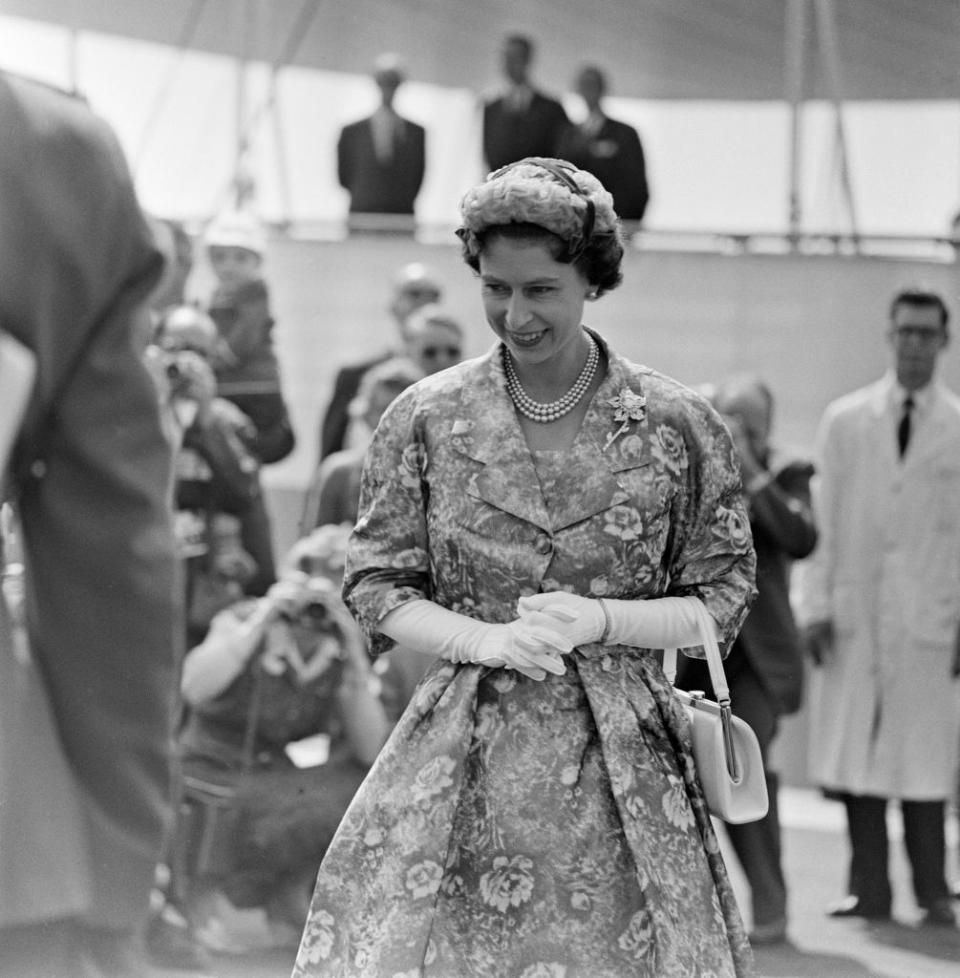
Embroidery was particularly useful. During a Commonwealth visit to Canada in 1959, the Queen wore a silk organza gown delicately embroidered with the provincial flower of Nova Scotia, the mayflower. She adopted a similar approach when she visited China in 1986, the first British monarch to do so. To dine with leader Deng Xiaoping she wore an Ian Thomas dress adorned with sprays of tree peony blossoms, China’s national flower.
Brooch diplomacy was another trademark tactic as Welsh diamond daffodils and Australian hibiscus made shimmering compliments to her host.
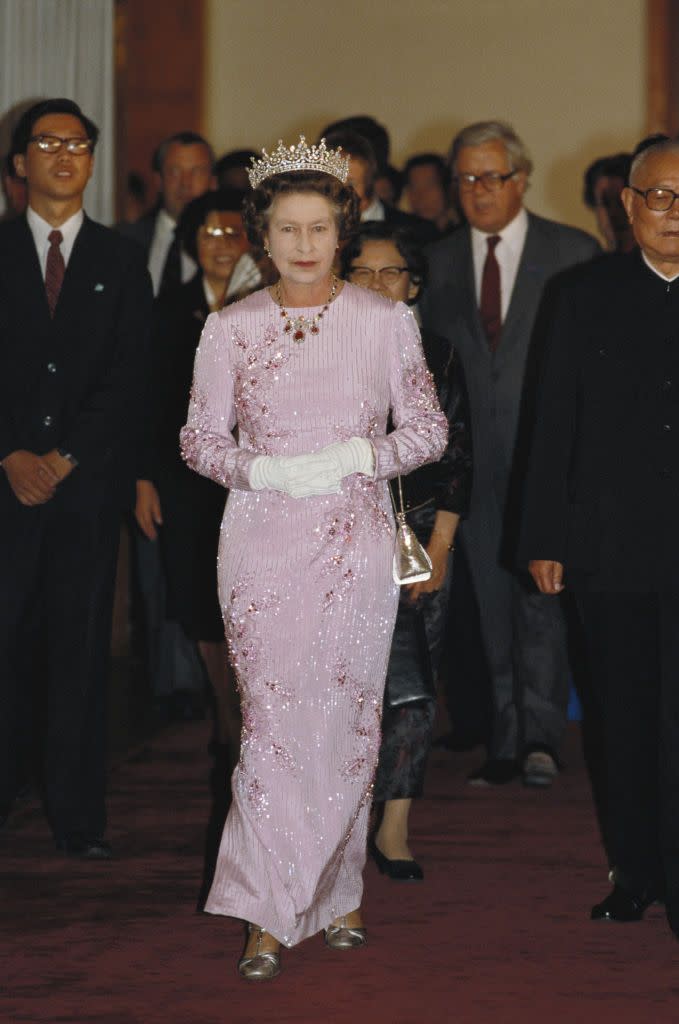
Colour was perhaps the most obvious tool in her arsenal. In 2011 she became the first British monarch to visit the Republic of Ireland for a century. In a show of solidarity with the Irish people, the Queen showcased a series of Gaelic green ensembles by Parvin and Kelly.

Bright and beautiful
Crucially, colour also ensured Elizabeth II was visible to crowds and cameras. She was, Kelly said, acutely aware that people ventured far and wide to catch a glimpse of her and was keen to reward their efforts.
Early in her reign she was often the only women in a room full of darkly clad men, so Hartnell dressed her in pretty pastels to ensure she stood out. Blue, Amies observed, "was obviously going to be [her] great colour, dictated by those oversized blue eyes." During the 1960s and 70s she embraced the fashions for brighter colours and diaphanous fabrics, but it is the rainbow Queen of recent years that many will remember most fondly.
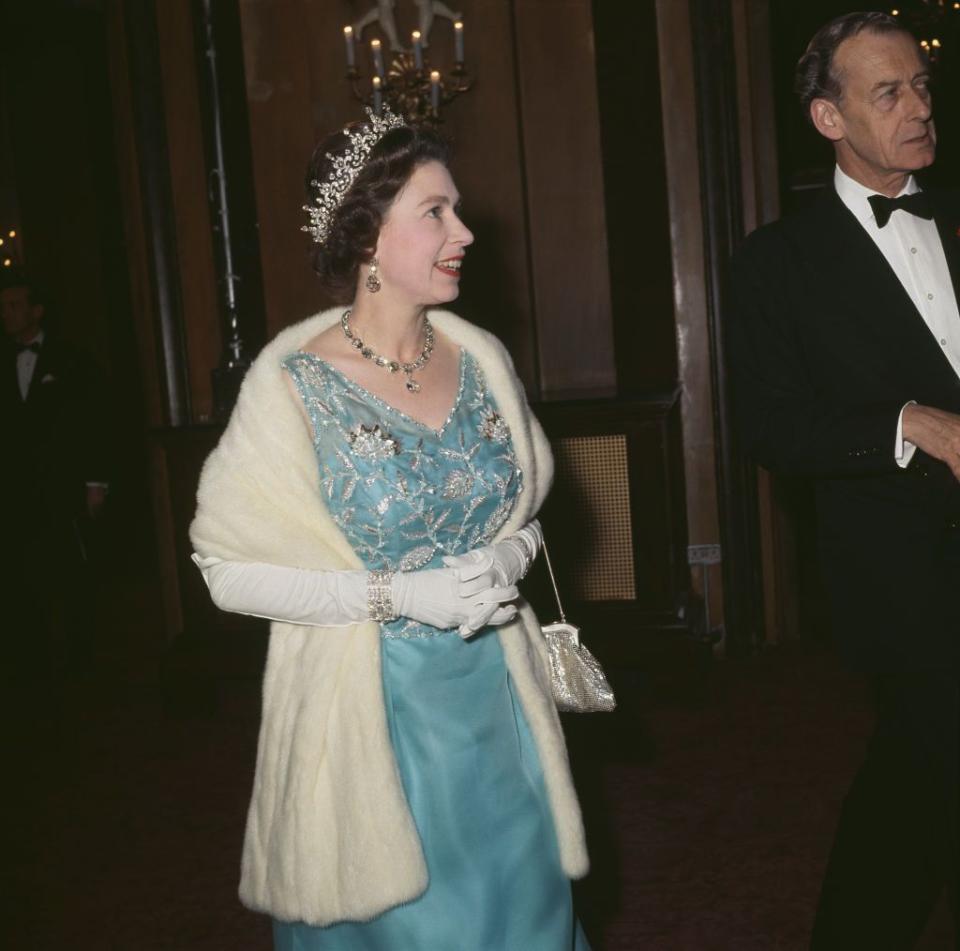
Under Kelly’s confident direction since her appointment as Senior Dresser in 1996, neatly tailored coats and matching hats in increasingly bold colours became Elizabeth II’s trademark look. Who can forget the neon lime number worn for the Trooping the Colour that marked her 90th birthday! The vibrant block colour contrasted ingeniously with the ceremonial red of the military uniforms and ensured that even among the pageantry our diminutive Queen was clearly visible.

Casual Queen
In her final decade, Elizabeth II remained closer to home. US photographer Annie Leibovitz photographed the Queen on two occasions. The spectacular portraits of the first sitting presented a monarch of Hollywood dreams. The second, by contrast, revealed the Queen off-duty in her favourite tartan kilts and tailored tweeds, surrounded by family and dogs at Windsor Castle. It was a pertinent reminder that behind the carefully stage-managed façade was a woman, wife and mother most at home in the countryside.
Perhaps surprisingly, it was this version of the Queen that had the greatest fashion influence. Her annual appearances at the Royal Windsor Horse Show were an enduring and accessible model for countryside attire and a gift to fashion columnists who detailed how women young and old could imitate her look. It was, of course, dominated by classic British brands: Hunter wellies, cardigans by Pringle of Scotland, blouses from Grosvenor Shirts Ltd, quilted Barbour jackets and Mackintosh trenches were all wardrobe stalwarts, each appointed the coveted Royal Warrant for their service to monarch. A rare exception was permitted only for her Hermès silk squares; a perennial favourite which she sported knotted neatly under the chin.

Long before it was fashionable, she championed reuse and re-wear. Dresses remained in her wardrobe for 25 years before being given to museum collections. Shoes supplied by brands such as Rayne and Stuart Weitzman were commissioned only in black, white and cream – heels of two inches or less – so they could be matched with any outfit. Once her clothes had fulfilled their official role, they often become part of her private wardrobe worn at home in Sandringham or Balmoral where she daily encountered the muddy paws of her beloved brood of Corgis.
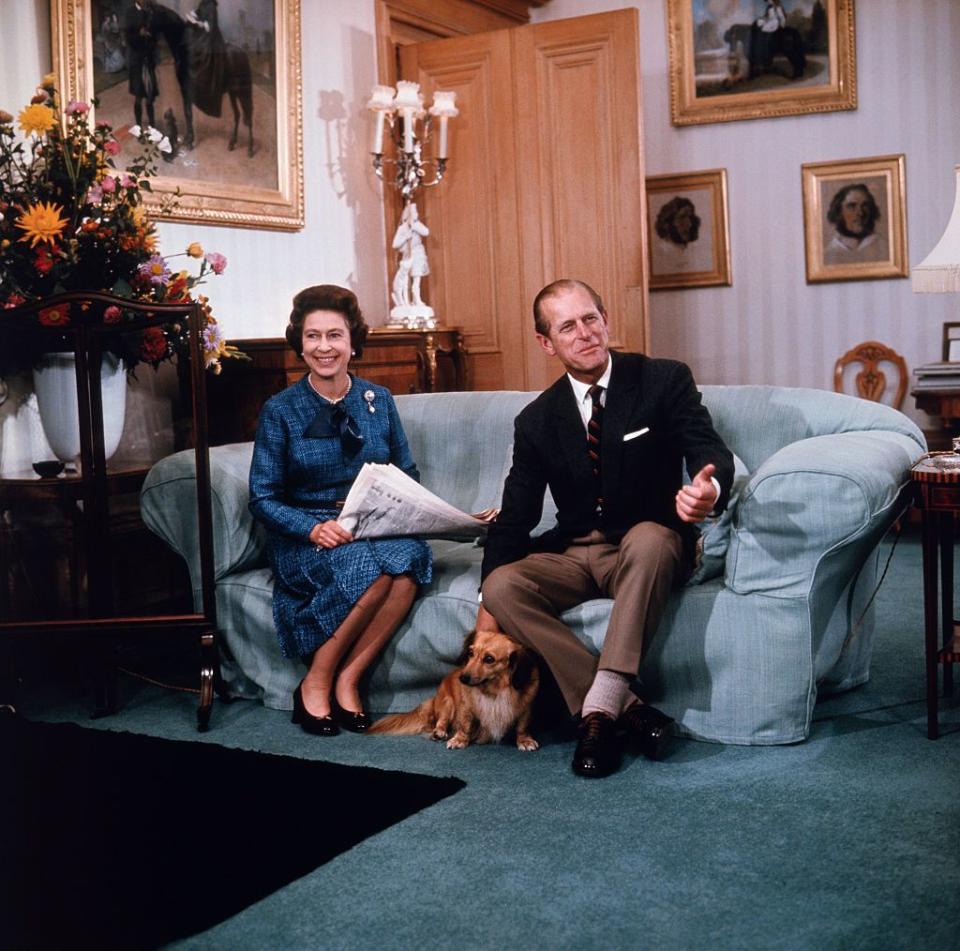
During her long tenure in the public eye, Queen Elizabeth II played many parts: Sovereign, diplomat, advocate, equestrian and mother, to name but a few. Having lived her life on the public stage, one got the sense that her clothing became her armour. Historic jewels, colourful hats and white gloves all served to distinguish her from the crowd. With the support of a few loyal designers, she avoided the foibles of fashion to craft an image which was elegant, timeless, and instantly recognisable. Above all, clothes were a tool for doing her job. As a Lady-in-Waiting observed, "the Queen is very modest with a complete lack of vanity, she only looks in a mirror to check that everything is as it should be, not because she wants to see how good she looks." Yet rarely did she put a sartorial foot wrong, immortalising herself as a style icon.
You Might Also Like


